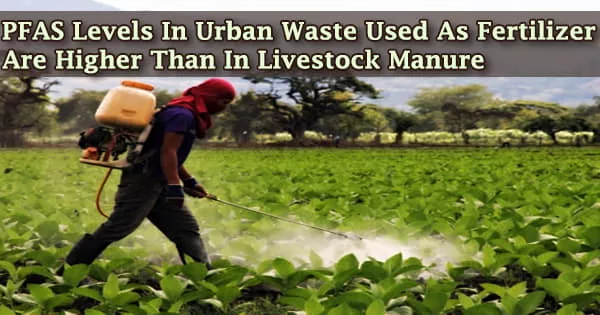Per and polyfluoroalkyl substances (PFAS) have been widely used in non-stick coatings, water-repellent textiles, and firefighting foams due to their helpful surfactant qualities. However, scientists have discovered these incredibly stable “forever compounds” in the environment, raising concerns about toxicity.
Researchers have now characterized PFAS in contemporary and historical organic waste products applied to agricultural fields in France, finding the highest amounts in urban samples and compounds changing over time, according to a study published in the American Chemical Society’s journal Environmental Science & Technology.
Although many nations have prohibited or phased out the production of the most dangerous PFAS, the compounds persist in the environment. They’ve also been replaced by other PFASs with unknown environmental and health impacts.
PFAS could be ingested by humans and cattle, excreted in their waste, and then leached into wastewater. Furthermore, when wastes are used as fertilizer in agriculture fields, PFAS can contaminate groundwater and bioaccumulate in food crops.
Sébastien Sauvé and colleagues from France’s National Research Institute for Agriculture, Food and Environment wanted to characterize multiple classes of PFAS in current and historical organic waste products, such as livestock manure, urban sewage sludges, and composts, and industrial wastes applied to agricultural lands in France.
Historical urban samples showed larger quantities of phased-out PFAS, whereas current samples were dominated by fluorotelomers, which could degrade to more persistent PFAS in the environment.
The researchers chose 47 samples of organic waste materials for use in the field that were gathered in France between 1976 and 2018. They used high-resolution mass spectrometry to look for recognized and previously unknown PFAS in the samples.
Over 90% of the samples included at least one PFAS, with other samples including up to 113 different chemicals. In livestock manures, the researchers found less and lower quantities of PFAS than in waste from cities.
They discovered large quantities of PFAS chemicals not usually examined in urban garbage, implying that prior studies overestimated total PFAS levels.
According to the researchers, historical urban samples showed larger quantities of phased-out PFAS, whereas current samples were dominated by fluorotelomers, which could degrade to more persistent PFAS in the environment.
The authors acknowledge funding from the Alliance Nationale de Recherche pour l’Environment; the Natural Sciences and Engineering Research Council of Canada; the Fonds de Recherche du Québec, Nature et Technologies; the Canada Foundation for Innovation; the Strategic Environmental Research and Development Program; and the McGill Engineering Doctoral Award scholarship.





